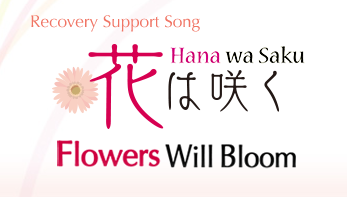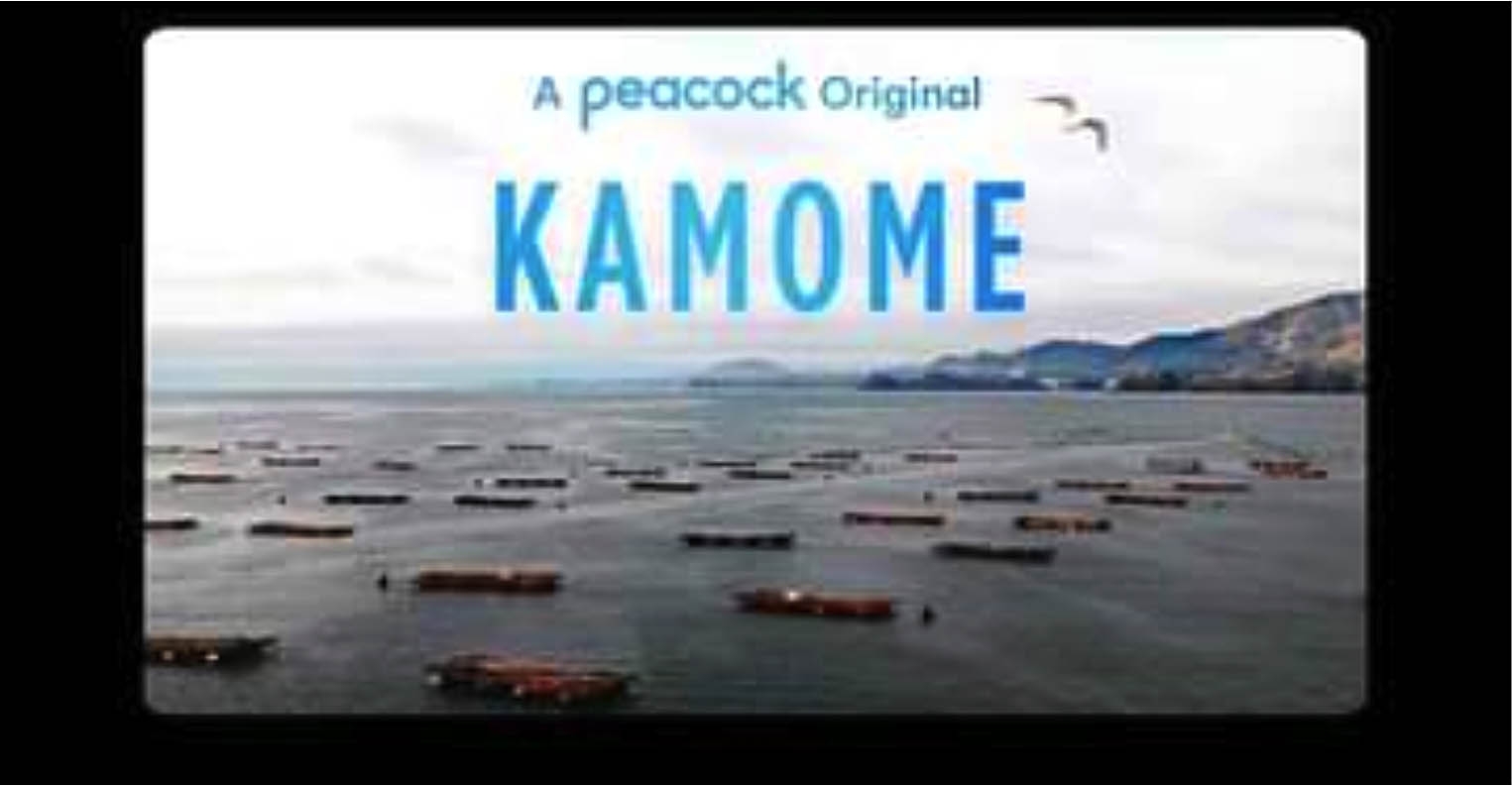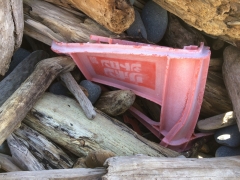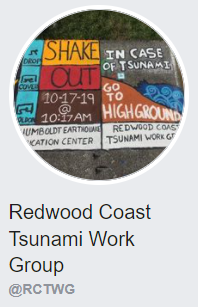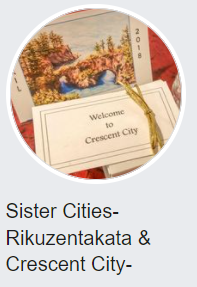The Great East Japan Earthquake and Tsunami
We remember: March 11, 2011
We remember the M9.1 earthquake of March 11, 2011. The earthquake and tsunami caused great loss in Japan and damaged harbors and coastal areas across the Pacific.
These communities have worked hard to recover from the damage and sorrow. The years since the tsunami have also forged special connections between communities across the Pacific, spurred scientific collaboration, and produced significant advances in understanding earthquake and tsunami hazards and promoting resiliency.
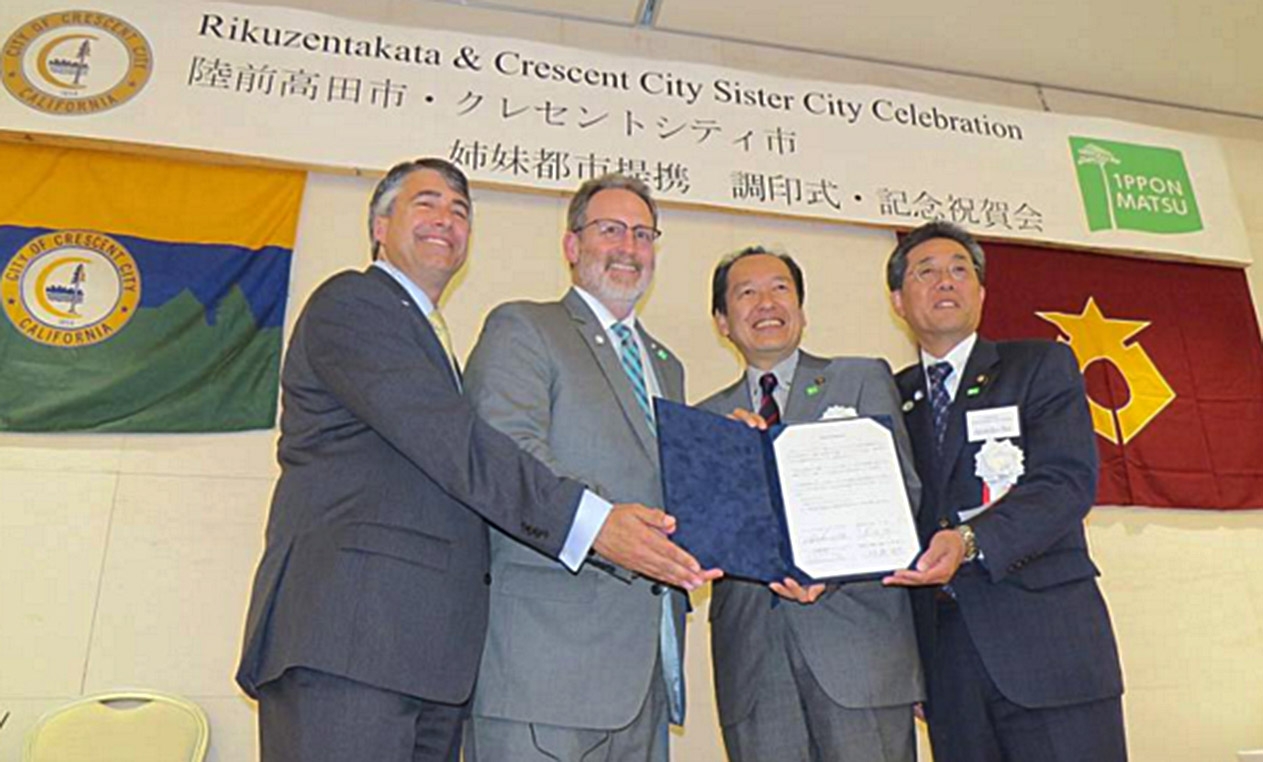
Video Testimonials
Emergency personnel, response agencies, scientists and others recount their experience of the 2011 tsunami and how it has affected preparedness efforts in the past decade.
Emergency management and response:
- Linda Nellist, Humboldt Bay CERT
- Cindy Pridmore, California Geological Survey
- Tim Petrusha - Humboldt Bay Bar Pilot
- Cindy Henderson - Emergency Manager Del Norte County, retired
- Jim Goltz - Branch Chief of the Earthquake, Tsunami & Volcano Hazards Program Cal OES, retired
- Maximilian Dixon - Geologic Hazards Supervisor Washington State Emergency Management Division
- Paula Akerlund - Ocosta School District Superintendent, retired
- Dan Larkin - Humboldt County Emergency Manager, retired
- Kevin Miller - Former Earthquake and Tsunami Program Manager Cal OES
- Kara Gately - National Tsunami Warning Center, Duty Scientist
Scientific collaboration and advances
- Emile Okal, Northwestern University
- Rick Wilson - Engineering Geologist, California Geological Survey
- Randy LeVeque - University of Washington, Professor Emeritus
- Carrie Garrison-Laney - Tsunami Hazards Specialist, Washington Sea Grant
- Jose Borrero - Tsunami Hazards Specialist, eCoast Consulting and University of Southern California Tsunami Research Center
- Costas Synolakis - Professor at University of Southern California and member of the Academy of Athens
Personal reflections
- Kymmie Scott - Emergency Services Manager for Del Norte County
- Todd Becker, California Office of Emergency Services Tsunami Program
- Tom Horning - Geologist and resident of Seaside, Oregon
- Amanda Admire - Instructor & Researcher Humboldt State University
- Lori Dengler, Humboldt State University
- Susan Tissot - Former Executive Director of the Pacific Tsunami Museum
- Troy Nicolini - National Weather Service Eureka Meteorologist in Charge
- Jay Patton - Engineering Geologist at California Geological Survey
- Barry Hirshorn - Pacific Tsunami Warning Center Duty Scientist
Suzie Howser, Dockmaster for Humboldt Bay (retired), recalls the events of March 11, 2011
After an early morning call, Suzie headed to Woodley Island. Below are excerpts from her reflection:
"Before leaving my home, I contacted the US Weather Service at Woodley Island for verification of event, projected timetables, and called senior staff members to advise them of the situation. All hands were needed to begin evacuation procedures.
Once at Woodley and as staff began to arrive, we started with notification of tenants. Staff went boat to boat, dock to dock to wake up any tenants that may be on board and advise them to evacuate the Island. Staff also checked and added additional lines to boats that needed them. Other staff were evacuating emergency equipment and supplies to an alternate location in Eureka.
[...] In the background, we heard the radio station say that Crescent City had been hit hard and their docks were destroyed. Suddenly, our phones were ringing off the hook, Crescent City boaters were calling. Boats that could make it, were heading our way and some boats were heading to Brookings. Remember, we had a storm approaching the coast. Our neighbors needed our immediate assistance. The Humboldt Bay Bar was rough, and [the US Coast Guard] were not sure boats could make it across, but they also understood. The Crescent City fleet had no other place to go. We received word that Brookings Harbor took a hard hit as well and knocked out one of their piers. Some boats who were heading to Brookings now turned around and were heading to Humboldt and others who were too small or did not have enough fuel had to wait outside Crescent City Harbor for the surges to slow down so they could anchor in the outer harbor to ride out the storm.
[...] A friend called me that evening from their home on Humboldt Hill. They could see the entrance to Humboldt Bay. They said that they could see groups of boats. One boat would come in and sit in the turning basin then the rest of the boats in that group would come in and follow the first boat up the bay towards Eureka. They watched this as other groups arrived. What I found out the next morning is that some Captains had never been to Humboldt Bay before so the experienced Captain would come in first and guide the others. We also found out that some boats were in such a hurry to leave Crescent City they were running single-handed. As boats arrived and docked, crews would run over to another boat to assist with lines.
By morning we had 50+ additional boats inside Humboldt Bay. Some at the City of Eureka, Englund Marine, Pacific Seafoods, Caito Fisheries, and Woodley Island. I was happy to see one boat in particular. The last boat that made it out of Crescent City Harbor was sitting quietly in a slip on F Dock. Fishing vessel Amanda B. I called Rich Young, CEO of Crescent City Harbor District and gave him an inventory of the Crescent City Boats, told him we would keep him up to date and offered any assistance we could.
We learned a lot from this event, and I hope we are all better prepared for the next.
Share your experience and memories with us!
Do you have a story to tell? Please use this form to describe how the tsunami affected you. We will review submissions and post on this website in the next two to three days. Please note, your account may be used for educational purposes.
Read the testimonials below:
Amy Uyeki - "My involvement with the East Japan earthquake and tsunami of March 11, 2011, was one of a world bystander, along with billions of others on this earth and especially those along the Pacific Rim, who watched in horror as so many lives in Japan were lost or devastated by this one-two punch of natural disasters. My first thought was – are my relatives and friends in Japan all right? And they were, but forever affected by the continuing unfolding of this tragic event, emotionally, psychically and economically. Residing in an earthquake/tsunami prone region, one always wonders when a similar situation could happen here. [...] But my strongest connection to the East Japan disaster came two years after the tsunami with the arrival of the small boat from Rikuzentakata." Read Amy's full recollection
Ryan Aylward - Warning Coordination Meteorologist with the National Weather Service in Eureka, CA and current co-chair of the Redwood Coast Tsunami Work Group "[...] A month later my wife and I moved to Humboldt County after I got a new job with the local National Weather Service office and I began to see how folks here in Northwest California were also impacted. In addition to the obvious damage in Crescent City and recovery efforts ongoing there; particularly impactful to me were the videos from the Mad River of people getting way too close to the tsunami waves. I realized how important it was to communicate the threats of tsunamis and understanding our local hazards. For me, it was the videos from the Mad River that brought it home. From that point on I jumped into researching the tsunami source regions, investigating local faults that could cause earthquakes, and joined the Redwood Coast Tsunami Work Group to provide my input into communication of the threat." Read Ryan's full reflection
Harold Tobin - Director of the Pacific Northwest Seismic Network, Prof. of Earth Sciences at the University of Washington "[...] Preparation matters. Awareness of the hazard and what to do if you feel a long and strong earthquake is the way to be prepared. Long and strong means "get gone." But only after the shaking is over. Buildings that are resilient can be key "vertical evacuation structures. [...] The most important thing is to have learned something from March 11, 2011, to understand the Earth better and to help prevent future suffering from disasters. Japan still has a high likelihood of future tsunamis, as does Cascadia. Let's be ready." Read Harold's full reflection
Kamome: How a small boat and a tsunami connected two cities across the Pacific
The Incredible Story of a Small Tsunami Boat
You can read the Extraordinary Voyage of Kamome in many languages on the Humboldt Digital Commons. You can also explore other resources on our Kamome site.
Facebook Stories: Recovering Hope
Kamome goes to the Olympic Games
This NBC documentary was created to share the story of the relationship that formed between Japan and California in the wake of the 2011 tsunami. You can view this documentary on NBCs Peacock TV. We've created a step by step guide to help you.
Do you have any questions now that you have watched the documentary? If so, please submit them to our team of experts.
If you're an educator and would like to set up a time to talk with an expert to learn more, just let us know!
More Kamome Stories
The connections made in the wake of the tsunami have had lasting impacts on various communities. Explore these stories below:
- The Friendship that a Boat Carried
- Amya Miller demonstrating kanji at Gearhart School
- Tokyo National Museum - 5 Year's Later
Bring Kamome into your classroom: resources for teachers and home-schooling parents
You can find many resources on the Extraordinary Voyage of Kamome website or follow the links below for Tsunami preparedness activities by grade which are also a part of our curriculum on the Kamome website.
Grades K-2 Grades 3-5 Grades 6-8 Grades 9-12
To get you started, we've collected a few helpful links below:
The Wave - A Japanese Folktale
ABCs with Kamome
Kamome Color Book
Extraordinary Voyage of Kamome
The Multnomah County Library is having a virtual storytime on Wednesday March 17th from 4-5 pm. Come join the story and complete some STEAM activities! Science Storytime - The Extraodinary Voyage of Kamome
The Tsunami Debris Story
The small boat Kamome was just one of many items found after the tsunami. Five million tons of debris were swept into the ocean by the tsunami. It included wood, plastics, household items and many boats. Much of it sank along the Japan coast but more than a million tons was pulled so far offshore that it was caught in the Northern Pacific Gyre, the slowly clockwise rotating current. The debris drifted in the currents and was blown by wind.
You can virtually explore and learn more about another boat that washed ashore in northern California in 2014 called Tai Shu Maru.
The first debris sighting near the North American coast was about a year after the tsunami and items continued to be found over the next five years.
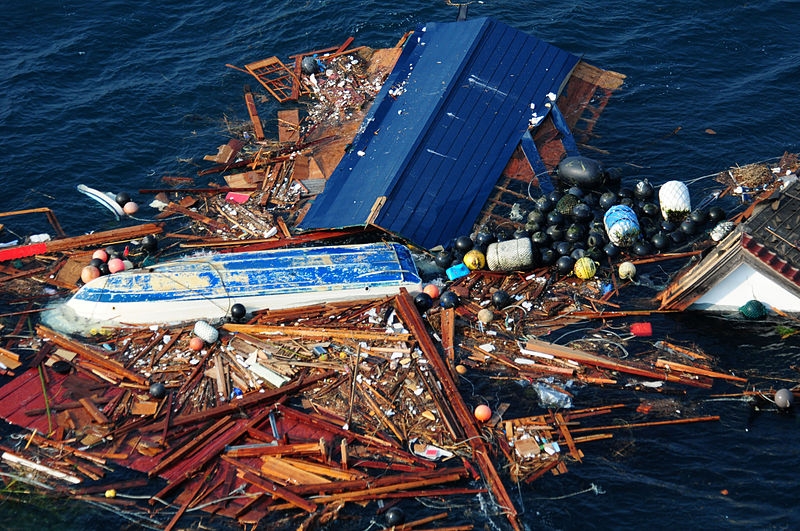

What about tsunami debris?
Tsunami debris is no different than any other beach debris. If you find debris ask yourself if it is hazardous or not.
Did you find something on the beach that may have come from Japan? Bottles, fishing floats and other items with Japanese characters were found on beaches in Hawaii, Alaska, British Columbia and the US West Coast in the years after 2011. Most of this could not be definitively linked to the tsunami as trash with Japanese writing can come from fishing vessels and other sources, but there was a definite uptick in beach debris during this period.
- Ron G. - Portion of a soda bottle crate
What happened on March 11, 2011:
The M9.1 Great East Japan earthquake occurred at 2:46 PM local time in Japan on Friday March 11. Like all great earthquakes, it was part of a sequence. A magnitude 7.2 foreshock began the sequence on March 9. The visualization below illustrates the background activity before, the main earthquake and the aftershocks over the next nine months. Aftershock activity continues to the present day. The most recent large aftershock was a M7.1 on February 13, 2021 that caused minor injuries and damage.
This video, compiled by Japanese scientists, shows earthquake activity in Japan in 2011. The activity in January and February shows the typical background level in the region. See what happens around March 11th!
This NOAA animation is a model of the tsunami as it traveled across the Pacific. The 9.1 earthquake deformed a 400 by 150 mile area of the sea floor of the coast and triggering a great tsunami that reached the Japan coast 25 minutes to an hour after the earthquake. The tsunami also traveled outward across the Pacific, reaching the Hawaiian Islands in about six hours and the West Coast of North America nine and a half hours after the earthquake. At Crescent City, the tsunami continued for over six days.
More information on what happened in Japan and elsewhere can be found on the California Geological Survey's site
Professor Lori Dengler was part of a team of scientists that traveled to Japan after the earthquake and tsunami. During her time there, she collected her observations and thoughts in a post-reconnaissance blog. Follow the link below to read her blog and see firsthand the impact of the 2011 Great East Japan earthquake and tsunami.
What Have We Learned From the Great East Japan Earthquake & Tsunami?
Crescent City Harbor
Boat owners in Crescent Harbor were alerted about the tsunami in the early morning hours of March 11th, 2011. There was a steady stream of boats exiting the harbor between 1:30 AM and 6:00 AM. Almost all of the commercial fishing fleet was able to safely exit the harbor before the first tsunami surges arrived. This video highlights a notable exception and an example of what not to do when a tsunami is approaching.
Rebuilding the Harbor
The tsunami caused more than $20 million in damages to the Crescent City, California harbor. Currents were so strong that all the structures within the harbor were damaged beyond repair. This video highlights the strong currents and harbor damage in 2011 and the harbor reconstruction.
Explore more lessons learned by following the links below:
- Emile Okal shares some of the lessons learned and the success stories from 2011 earthquake and tsunami
- Insights from the great 2011 Japan earthquake as described by Thorne Lay and Hiroo Kanamori
- Barry Hirshorn describes the Pacific Tsunami Warning Center's forecast characteristics
- Duputel and others describe the success of the W phase inversion to improve warning times
- NTHMP Summary - Learn about the accomplishments and advancements in response to the March 2011 earthquake and tsunami
- Jay Patton shares the work he and colleagues are doing at the California Geological Survey to improve California's tsunami preparedness
- Barry Hirshorn with the Pacific Tsunami Warning Center shares the warning center timeline from 2011 and describes how it has changed in the last 10 years
- Brendan Crowell (University of Washington) shares the GFAST that is currently running at @PNSN1 which shows that a lot of work has been done in the last ten years on GNSS for rapid modeling of earthquakes. This is what is possible today because of the lessons learned from the Great East Japan earthquake.
- Lori Dengler presents on how Kamome promotes outreach, education, and tsunami awareness in the time of a pandemic at the 30th International Tsunami Symposium at Sendai in Tohoku in July 2021
How Others Are Remembering the Great East Japan Earthquake and Tsunami
Oregon ShakeAlert goes live!
Oregon now joins California in providing earthquake early warning alerts. Learn more about MyShake
The National Centers for Environmental Information (NCEI) invites you to learn more about what happened on March 11, 2011
Check out the California Geological Survey's Story Map to explore the impacts of the earthquake and tsunami
The National Tsunami Hazard Mitigation Program TsuInfo Alert Newsletter highlights the importance of remembering those affected by the Great East Japan earthquake and tsunami.
Lori Dengler (HSU) and Troy Nicolini (NWS Eureka) joined James Faulk on Headline Humboldt to talk about the 2011 Japan tsunami and how it impacted California's north coast.
On March 11, 2021 the Carib Wave exercise will occur. This exercise will include a test of the communications systems for events in Jamaica and Northern Lesser Antilles. You can register and learn more at TsunamiZone.org
The Earthquake Engineering Research Institute has created a Resources & Photo Gallery and has shared the Social Science Report
Earthquake Spectra published a special issue in 2013 reflecting on the 2011 Great East Japan earthquake and tsunami.
The Japan Meteorological Agency is hosting a 2011 Great East Japan Earthquake Portal
Media & News Stories
How the media is covering the ten-year milestone:
- Memorial Bell in Miyagi Prefecture
- Perceptions of recovery in the Tohoku region
- Rebuilding Minamisanriku, ten years later
- Ten years later: economies still struggling in the Japan disaster zone
- A Survivor's Account of March 11, 2011
- COVID tempers official commemoration of the Tohoku earthquake and tsunami
- After Japan's 2011 Tsunami a City is Rebuilt - Now it Needs People to Survive
- Tsunami Walls - Kesennuma's Quest for a Middle Way
- The U.S. Embassy Japan Magazine, American View, shared a story about the Rikuzentakata-Crescent City relationship
- Del Norte Tripicate article honoring and reflecting on the 2011 Great East Japan tsunami
- Aljazeera article Devastated communities, an unseen fear: Japan's 2011 tsunami
- ABC7 News article reflecting on lessons learned from 2011 Japan tsunami and how to help SoCal be more prepared
- 10 Year On: Salt from Japan Adds Flavor to Cheese in California
- The Guardian article Fishing boat washes up in Japan almost 10 years after it was lost in tsunami
Professor Fumhiko Imamura from Tohoku University and IRIDeS shared the message below:
"The coastal area was devastated by the sudden earthquake that occurred 10 years ago, and the sadness, suffering, and despair of that time are memorable and still unforgettable. An area filled with piles of rubble lay quietly and lost its voice to the ferocious nature. Among them, the hard work to save lives from the changed area and the appearance of the missing people involved in the restoration and reconstruction step by step gave new hope.
Earthquake folklore facilities in the disaster area in eastern Japan are still being developed, and since they are scattered in a vast area that spans multiple prefectures, gathering this information and going around in a limited time. Is not easy. Therefore, it is necessary to classify and provide information on traditional facilities, install guide maps and signs, and network them so that facilities can be visited and inspected efficiently according to the purpose and time.
Against this background, the 3.11 Densho (Traditional) Road Promotion Organization was organized. In order to learn the lessons learned from the Great East Japan Earthquake, we are aiming for activities to carry out various disaster prevention initiatives and projects by utilizing the network of earthquake disaster transmission facilities."
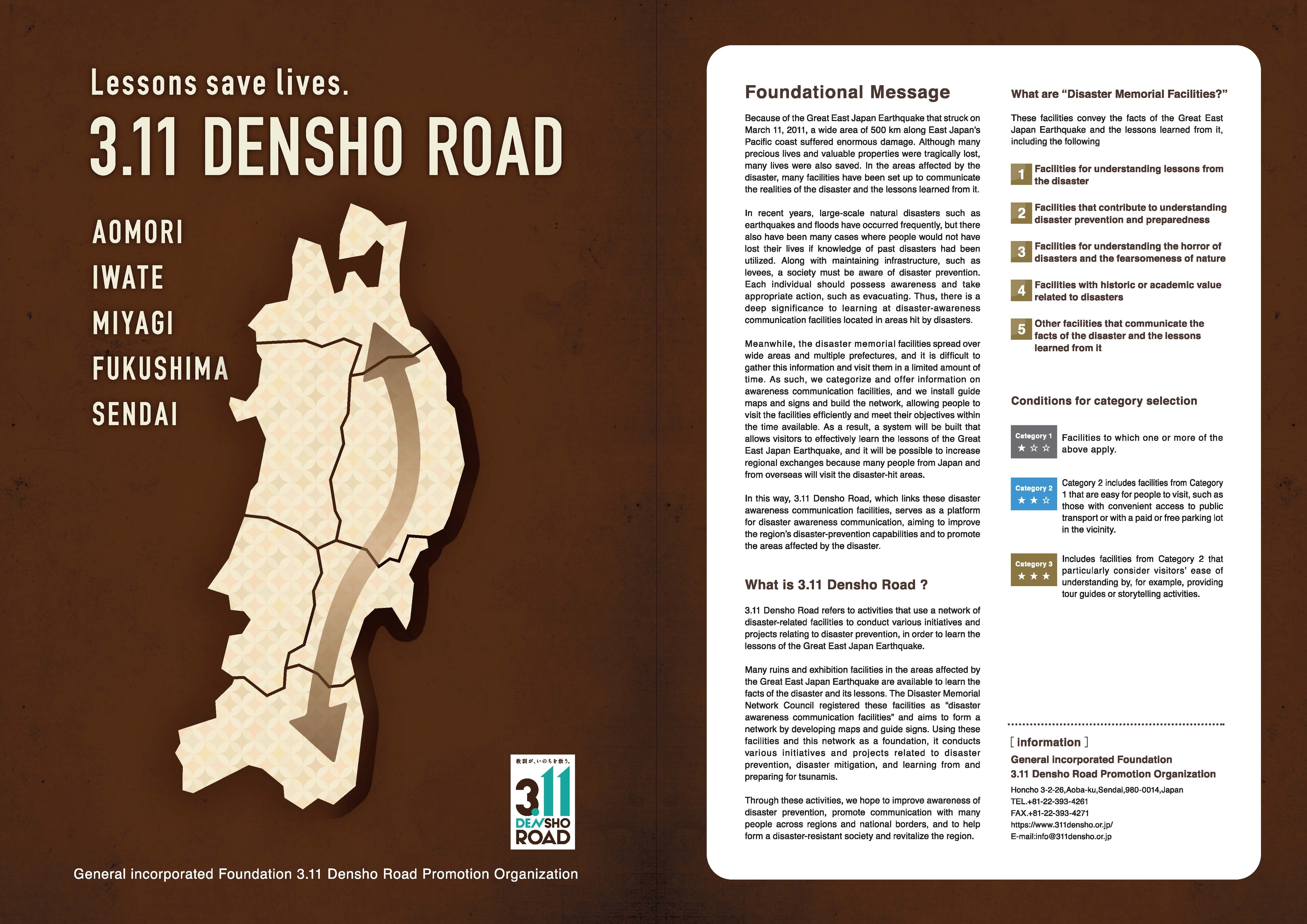
In Japan, many are remembering the events of March 2011. A commemorative song was created to support those during the recovery. This song is titled Hana wa Saku (Flowers will bloom). Learn about this song and the composers http://www.nhk.or.jp/ashita/english/song/
